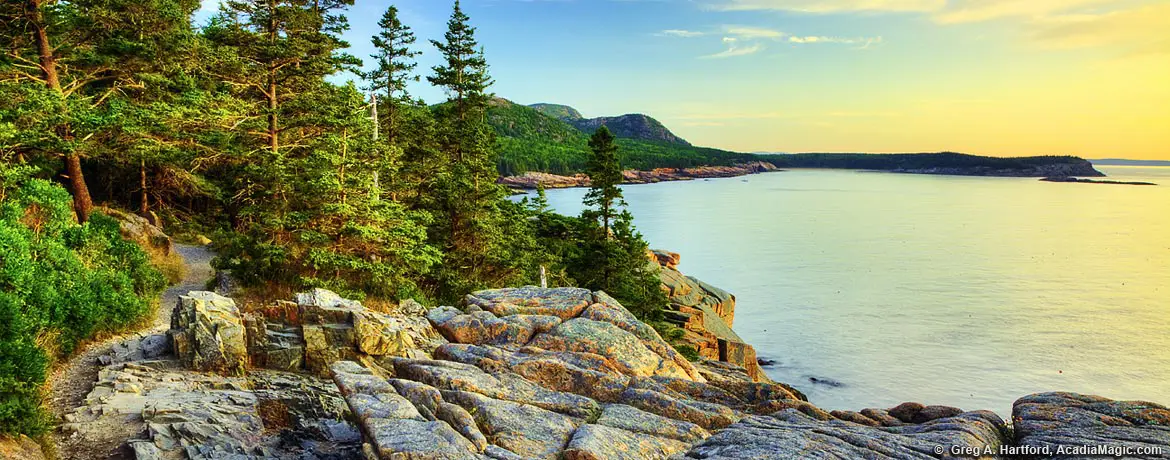What is here to see?
About half-way between Sand Beach and Otter Cliff, is the famous Thunder Hole. If the waves and the tide are just right, you just might get to hear the signature sound that is like thunder while still some distance away. Just as you arrive, you will likely notice the aroma of the salt air but also mixed with the aromatic smell of the many wild rose bushes next to the entrance. Granite stairs with railings take you down to the viewing area. Below the surface of the water at the end of the inlet is a concave space. When the water pulls back, air gets into the little cave but then is trapped when the next wave comes crashing in. As the air is forced out, it creates a deep and loud “clap” like sound or a deep lower frequency rumble like thunder.






